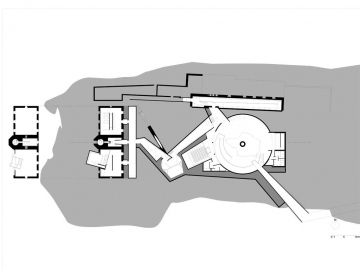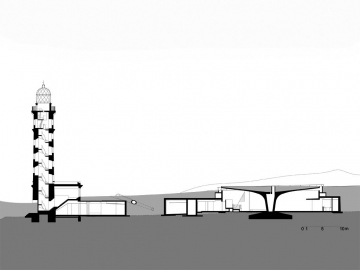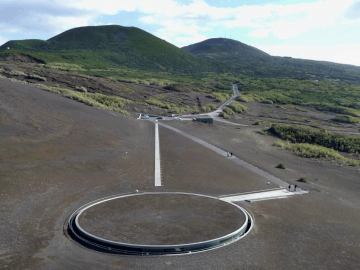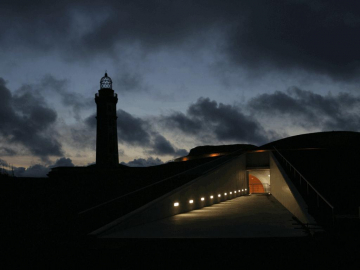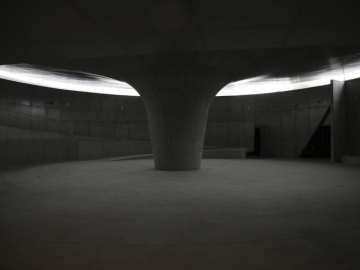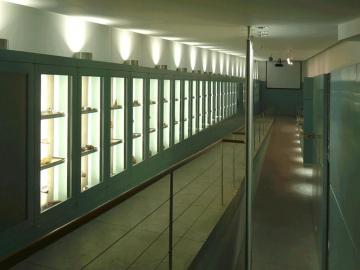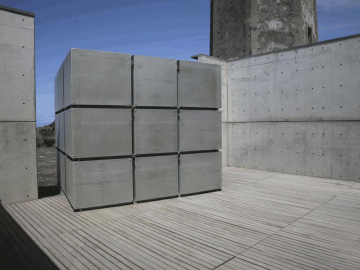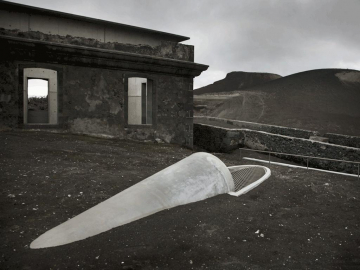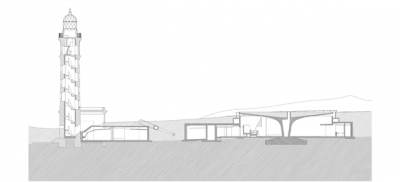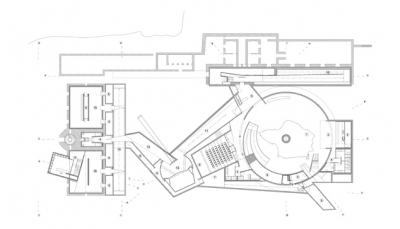Capelinhos, Volcano Interpretation Center
Important as a historic moment and as an aid to comprehending how the archipelago of Azores was formed, the eruption occurred in 1957/58 definitely transformed the landscape of the island of Fayal, burying the lighthouse that stood on the tip of the island and opening up an crucial page in the scientific understanding of underwater volcanoes.
The furore of that moment and the consequences should be the premise in the intervention that would fill the existing lacuna. With the intention of setting up an interpretive centre, the transformation of the lighthouse and its surrounding area should preserve the ruin, recover the landscape of the area, make the resulting image unforgettable and provide an explanation of all the phases involved from the construction of the lighthouse until today.
Thus, the visitors path to the site was chosen at a more distant venue; looking at the lighthouse and the volcano, which one sees and feels, the visitor is invited to walk, either on spaced flagstones or basalt cobblestones, the last few metres that separates him from the beginning of a trip through time, simultaneously past and future.
The building is subterranean, set on pre-eruption land, and provides a journey through history, subdividing the museological content of an informative, scientific and leisure character into three distinct sections: before, during and after the eruption.
The historical journey begins in the large, circular foyer, which measures 25 metres in diameter that stands exactly on the cul-de-sac that then existed and finishes on the ruins of the lighthouse, emerging in a steel-reinforced glass cube; the lighthouse has an independent entrance, its main objective is to function as a lookout.
Built in reinforced concrete and devoid of any facing, the building serves as an interactive element between the museum and the architectonic scenarios that exist along the walk.
The adoption of these principles minimises the impact that a traditional intervention could imply, thus allowing the visitor to take in the place in stages, from the emotional to the scientific.
Publicly presented on 31 July and 1 August 2003 (the centenary of the inauguration of the Capelinhos lighthouse), the preliminary study merited the support of both the public and the entities present and this led to the project and subsequent construction, with a view to opening the Volcano Interpretation Centre during the commemorations remembering the fiftieth anniversary of the eruption which occurred on the 17 of August 2008.
The possibility for people to participate in the definition, conception, design and choice of exhibits allowed the systematic adjustment of the building, transforming the act of projecting and constructing into a continuous laboratory where new values were conjugated with the usual ones. Different specialists chose the exhibits, introducing variants that resulted from technical and artistic means inherent in their conception and production.
This chance to control the most profound change or the slightest detail raised the level of the architects responsibility and offered greater opportunity to fulfil the ideal of unity between the building, its contents and the site.

